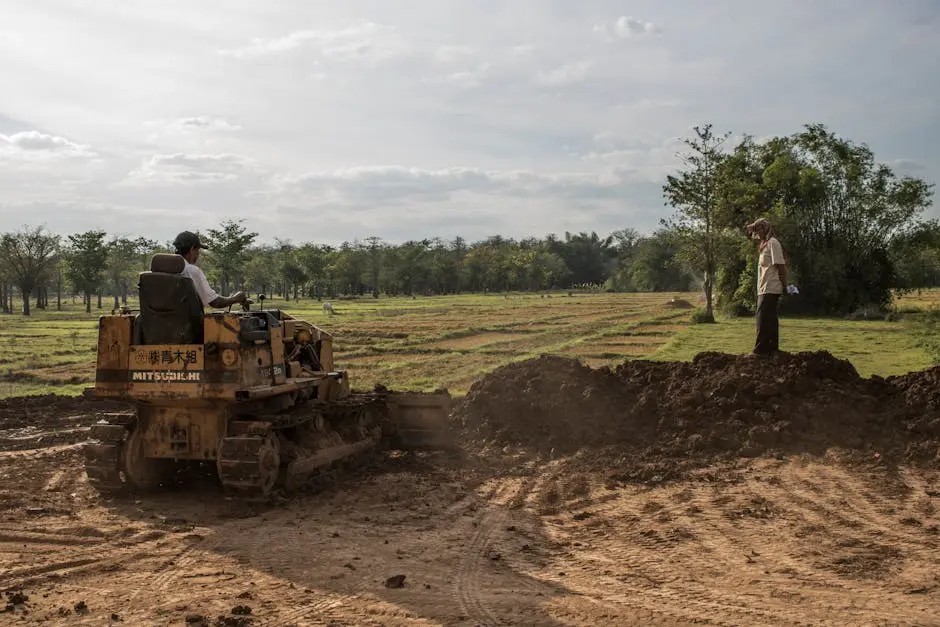7 Reasons Why Soil Testing is Crucial for Engineering Projects
Soil testing is often overlooked in the early stages of engineering projects, yet it holds the key to ensuring structural integrity and project success. Understanding the type of soil you are working with can save both time and money, while also enhancing safety. In this post, we will explore seven compelling reasons why soil testing should not be neglected.
1. Identifying Soil Composition
Soil testing allows engineers to assess the composition of the ground they are building on, which is vital for making informed decisions on design and materials. Each type of soil has unique properties that influence how it behaves under pressure. For instance, sandy soils drain quickly, while clayey soils tend to hold onto water, leading to potential problems if not accounted for during construction.
Additionally, understanding the soil composition aids in selecting appropriate building materials that interact well with the foundation. For example, a mixture of clay and silt might require stabilization techniques to ensure stability under structural loads. This knowledge, obtained through soil testing, empowers engineers to confidently design foundations that will stand the test of time.
2. Ensuring Structural Stability
Understanding the soil’s load-bearing capacity is essential for maintaining the structural stability of a project, preventing costly failures. When soil testing is meticulously conducted, engineers can gauge how much weight the soil can support, which is crucial for designing safe structures. This understanding not only enhances safety but also aids in optimizing construction costs.
Moreover, soil stability can be affected by various factors, such as groundwater levels and nearby vegetation. Regular testing allows for ongoing evaluations of these impacts. By being proactive rather than reactive, engineering teams can mitigate risks associated with soil movement or subsidence, leading to a more robust and reliable infrastructure.
3. Preventing Water Issues
Soil testing helps in identifying drainage issues that could lead to water accumulation, which is detrimental to structural integrity. Waterlogged soil can weaken foundations and lead to hazardous conditions, making it imperative to address drainage earlier in the project lifecycle. Engineers often utilize soil testing techniques to evaluate permeability levels and adjust their designs accordingly.
Furthermore, understanding the interaction between soil and water aids in creating effective drainage systems. A site with high clay content, for instance, may require specialized drainage measures to prevent flooding. Regular testing and analysis can help identify these needs ahead of time, ultimately safeguarding the project from future water-related problems.
4. Tailoring Engineering Solutions
With precise soil analysis, engineers can tailor their designs and construction methods to address specific soil conditions. No two projects are identical, and the ground conditions can significantly vary across different sites. Soil testing offers detailed insights into the physical and chemical properties of the soil, allowing for customized engineering solutions.
For example, soil with high organic content may necessitate different footing designs compared to rocky or sandy soil. Tailoring solutions based on soil testing results not only enhances safety but also optimizes performance and longevity of the structure. This precision in engineering leads to improved outcomes and client satisfaction.
5. Assessing Environmental Impact
Soil testing plays a crucial role in understanding the environmental impact of construction projects, ensuring compliance with regulations and sustainability efforts. Often, construction activities can disrupt the natural balance of the ecosystem. By analyzing soil data, engineers can identify any potential contamination or hazards that need to be addressed.
Moreover, understanding the soil’s capacity for supporting various plant life can influence landscape planning, further integrating construction with the local environment. Soil testing helps educate engineers about sustainable practices, guiding them to make environmentally friendly choices that respect the surrounding ecosystem while achieving project goals.
6. Mitigating Risks and Costs
By identifying potential soil-related risks early on, projects can save money and avoid delays caused by unexpected issues. Soil testing can uncover hidden problems that, if left unchecked, might demand costly interventions mid-project. Knowing the soil type and its characteristics allows for more accurate budget forecasts.
In addition, when soil issues are tackled at the outset, engineering teams can allocate resources more efficiently, fostering a smoother workflow. In many cases, a little investment in thorough soil testing can prevent significant expenses down the line, reinforcing the importance of diligent soil investigations during the planning stages.
7. Enhancing Long-Term Viability
Investing in soil testing enhances the long-term viability of a project, leading to fewer maintenance issues and greater satisfaction from stakeholders. Structures built on properly tested soil are more likely to endure the rigors of time, weather, and usage. This not only increases the durability of the building but also contributes to a lower cost of ownership over its lifespan.
Additionally, well-planned projects based on comprehensive soil testing can attract future investments and interest, as stakeholders recognize the reduced risk associated with solid engineering foundations. Therefore, from a business perspective, the initial investment in soil testing could yield significant returns in reputation, sustainability, and overall satisfaction.



